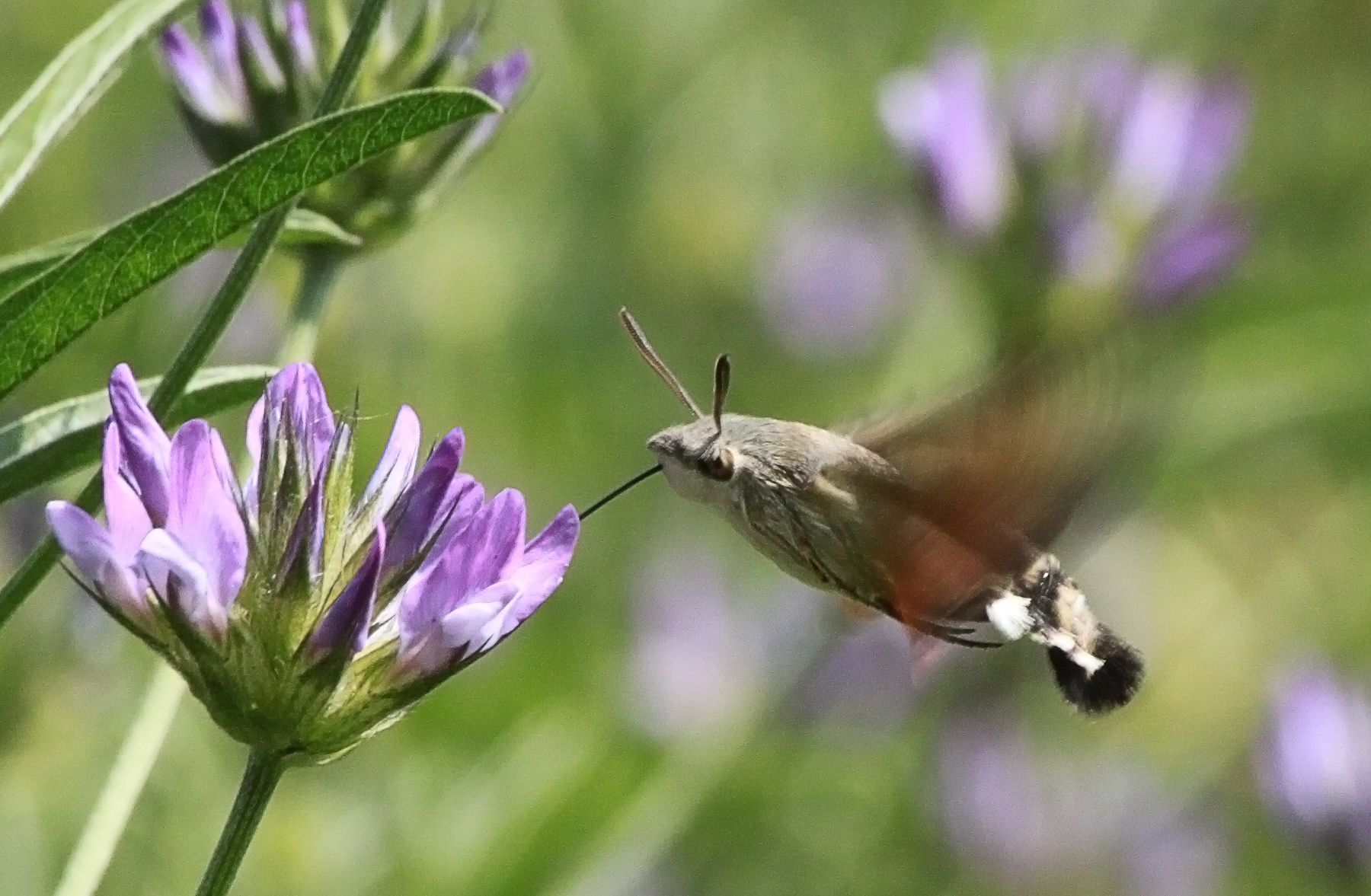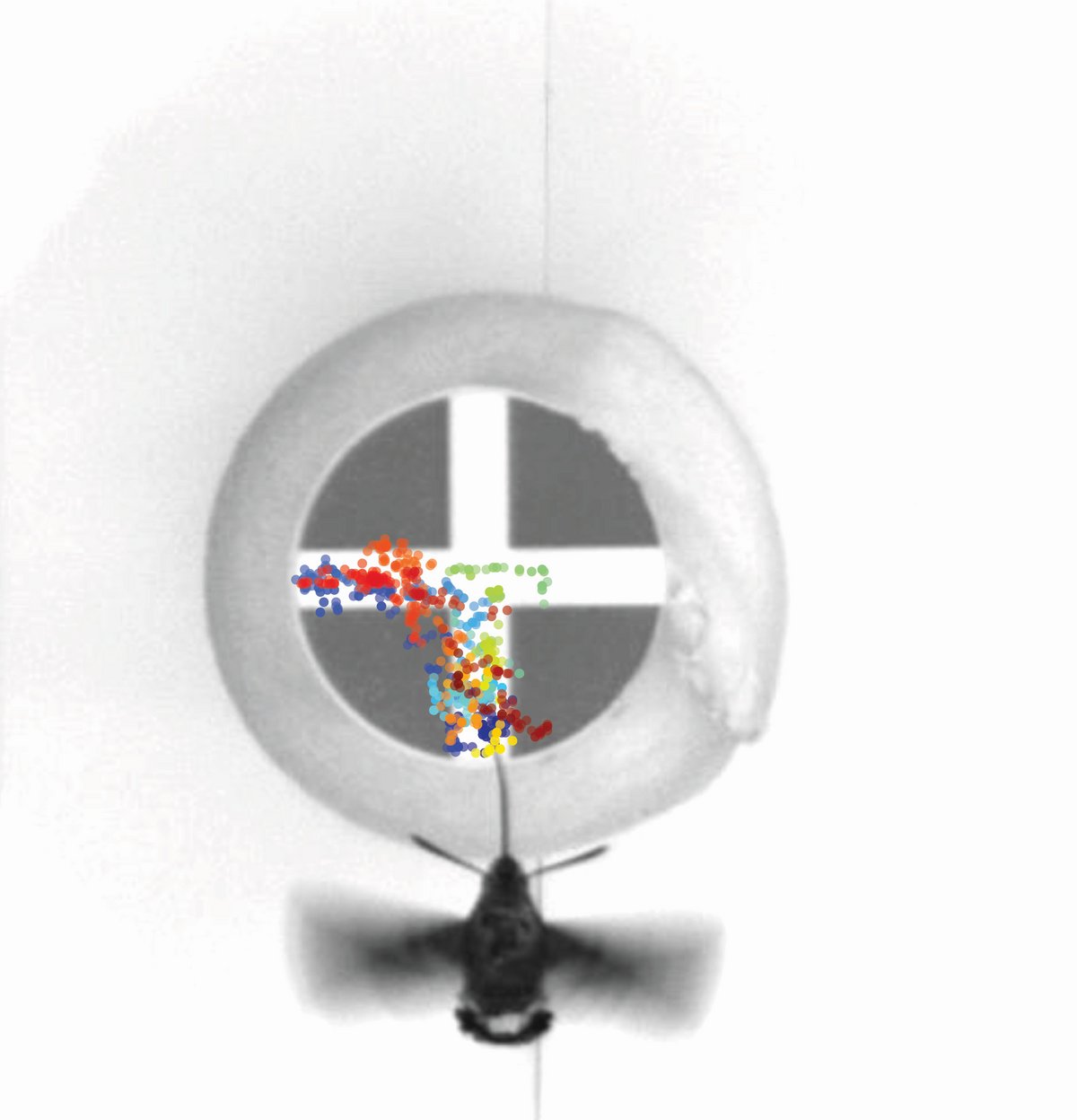
A firm eye on the proboscis
Just as when we humans reach for objects, the hummingbird hawk moth uses its visual sense to place its long proboscis precisely on a flower to search for nectar, according to a study by Konstanz biologists. This is why the moth is a great model organism for research into the visual control of appendages.
Have you ever seen a hummingbird hawk moth? When people encounter this moth for the first time, they are usually intrigued: Looking like a cross between a butterfly and a bird – hence the name – this animal has the amazing ability to hover like a helicopter for long periods. On closer inspection, another feature of the hummingbird hawk moth quickly catches the eye: the spiralling curled proboscis, which is as long as the entire animal.
The moth uses its proboscis to suck nectar by inserting it through a tiny opening into the floral nectaries, seemingly effortlessly and in a matter of seconds. "It's like trying to hit the opening of a drink can with a two metres long straw in your mouth", says Anna Stöckl, a biologist at the University of Konstanz. In a recent study in the journal PNAS, she and her colleagues investigated the sensory information the moths rely on to precisely control their proboscis. They discovered that the animals use their sense of sight to move and, if necessary, correct the movement of the proboscis using visual feedback on the way to the nectary, much like we humans do when grasping something with our hands. This complex form of appendage control was previously known mainly from animals with comparatively large brains, such as monkeys or birds.
Looking at the proboscis in "slow motion"
To demonstrate that this appendage control also occurs in insects, the researchers conducted sophisticated behavioural experiments in which hummingbird hawk moths were recorded with high-speed cameras as they approached artificial flowers. This way they could determine the exact positions of the moths' bodies, heads and proboscis with high temporal resolution while the animals were searching for nectar. It is known that hummingbird hawk moths use visible patterns on the flowers, which they scan with their proboscis to get to the sugary liquid faster.
The movement analysis initially revealed that hummingbird hawk moths can only move their proboscis forwards and backwards by about one and a half centimetres, and can hardly move it sideways at all. To control the rough positioning of the proboscis in the flower, the animals move their entire bodies in flight, while the smaller movements of the proboscis itself are used to precisely target the flower pattern. "It's very similar to our fingers, which, apart from the thumb, we can mainly move forwards and backwards. Nevertheless, we can perform very complex movement patterns by also moving our hands for rough directional control – for example when playing the piano", explains Stöckl.
Insect brains are masters of efficiency
There is another similarity to humans: hummingbird hawk moths need continuous visual information to manoeuvre their proboscis precisely to the nectary, just like we humans have to keep our eyes on our fingers to direct them towards a target when performing untrained hand movements. If the moths' eyes were covered so they could not see their proboscis, they could still touch the flower. However, they no longer scanned their proboscis along the flower patterns, but instead scanned randomly, which can prolong the search for nectar.
The fact that the moths use visual feedback for the fine control of their proboscis was somewhat surprising, because such a real-time coordination between what they see and the movement of their proboscis is computationally complex. Insects have a comparatively simple nervous system with less than one million nerve cells, compared to nearly 90 billion in the human brain. "To complete this task, the insects have only a tiny fraction of the processing capacity of our human nervous system", says Stöckl. That is exactly what makes them so interesting as a model organism for research into the visual control of appendages. "And that is not all! These small brains and their efficient way of working are also great models for applied research, for example in robotics. We can learn a lot from hummingbird hawk moths", Stöckl points out.
Key facts:
- Original publication: S. Kannegieser, N. Kraft, A. Haan & A. Stöckl (2024) Visual guidance fine-tunes probing movements of an insect appendage. PNAS; doi: 10.1073/pnas.2306937121
- Study proves limb control with the help of visual feedback in insects (hummingbird hawk moth; Macroglossum stellatarum)
- Stöckl is a junior professor and the leader of an Emmy Noether research team at the University of Konstanz: https://www.insect-vision.com/
- Stöckl regularly publishes her research for a wide audience. A selection of her work is available at: https://www.annastoeckl.com/science-communication
- Open Science: The replication data for the study are available open access from Figshare; the associated analysis scripts can be downloaded from Github.


